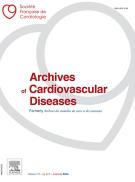Psychoactive substance use in elderly patients: Insights from the addiction in intensive cardiac care units (ADDICT-ICCU) study - 02/04/25

for the ADDICT-ICCU investigators
Graphical abstract |
Highlights |
• | Psychoactive substance use is common in elderly patients. |
• | The psychoactive substance used most frequently by the elderly is benzodiazepine. |
• | Recreational drug use in the elderly is also not uncommon (5%). |
• | Differential patterns of substance use are seen in elderly and younger patients. |
• | 58% of elderly recreational drug users underdeclared their recreational drug use. |
Abstract |
Background |
The United Nations has recently highlighted a global epidemic of psychoactive substance use among elderly people. Although several studies have established the important prognostic impact of psychoactive substance use in terms of cardiovascular events, the epidemiological characteristics of this consumption in elderly patients hospitalized in intensive cardiac care units (ICCUs) are not well established.
Aim |
To assess the prevalence of psychoactive substance use in all consecutive elderly patients hospitalized in ICCUs from the Addiction in Intensive Cardiac Care Units (ADDICT-ICCU) trial. We described the epidemiological characteristics of this consumption to identify the consumption pattern in elderly and younger patients.
Methods |
Systematic prospective screening for psychoactive substances was performed by a urine test (NarcoCheck®) in all patients admitted to an ICCU in 39 French centres from 7th to 22nd April 2021. The primary outcome was the prevalence of psychoactive substances, including recreational drugs (cannabis, cocaine, ecstasy, amphetamine, opioids) and psychoactive medications (benzodiazepines, methadone, buprenorphine, barbiturates, tricyclic antidepressants).
Results |
Among the 1499 patients included in the study, 760 (51%) were elderly (≥ 65 years). Among the elderly patients, 157 (21%) tested positive for at least one psychoactive substance, 38 of whom (5%) tested positive for a recreational drug. The psychoactive substances most frequently detected were benzodiazepines (44%), followed by opioid substitution medications (42%) (methadone [24%] and buprenorphine [18%]), cannabis (18%), tricyclic antidepressants (9%), cocaine (7%) and opioids (3.2%). Multiple psychoactive substance detection was frequent (22% of positive patients). Compared with younger patients, elderly patients had a 3-fold lower cannabis consumption (18 vs. 53%; P<0.001), but a 2-fold higher benzodiazepine consumption (44 vs. 22%; P<0.001).
Conclusions |
This study highlights the significant prevalence of psychoactive substance use among a large cohort of elderly patients hospitalized in ICCUs. Differential patterns of substance use were observed in elderly and younger patients.
Le texte complet de cet article est disponible en PDF.Keywords : Elderly, Psychoactive substance, Recreational drug, Recreative drug, Intensive cardiac care unit
Plan
Bienvenue sur EM-consulte, la référence des professionnels de santé.
L’accès au texte intégral de cet article nécessite un abonnement.
Déjà abonné à cette revue ?

